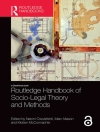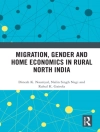Many policies in several Western European countries and the U.S. aim to counter spatial concentrations of deprivation and create more socio-economically mixed residential areas. Such policies are founded on the belief that neighbourhoods have a strong and independent effect upon the well-being and life-chances of individuals. The adequacy of the evidence base to support this position has been the subject of spirited debate on both sides of the Atlantic. The primary purpose of this book is to contribute to this policy-relevant discussion by presenting new scholarship from many countries that rigorously quantifies various sorts of neighbourhood effects through the use of cutting-edge social scientific techniques. The secondary purpose of this book is to introduce these techniques to a wider array of housing and planning researchers and to show how a variety of disciplines have offered insightful, synergistic perspectives. Research on neighbourhood effects has over the last 15 years led to a body of knowledge extending far beyond the sociological urban research where it originated. The problem of quantifying neighbourhood effects and the use of associated methodologies (like multi-level analysis, instrumental variables) has attracted scholars from criminology, sociology, social geography, economics and health science, and thus serves as a critical locus for interdisciplinary scholarship.This book was previously published as a special issue of Housing Studies.
Jorg Blasius & Jurgen Friedrichs
Quantifying Neighbourhood Effects [PDF ebook]
Frontiers and perspectives
Quantifying Neighbourhood Effects [PDF ebook]
Frontiers and perspectives
Buy this ebook and get 1 more FREE!
Language English ● Format PDF ● Pages 238 ● ISBN 9781317968009 ● Editor Jorg Blasius & Jurgen Friedrichs ● Publisher Taylor and Francis ● Published 2013 ● Downloadable 3 times ● Currency EUR ● ID 7119447 ● Copy protection Adobe DRM
Requires a DRM capable ebook reader












